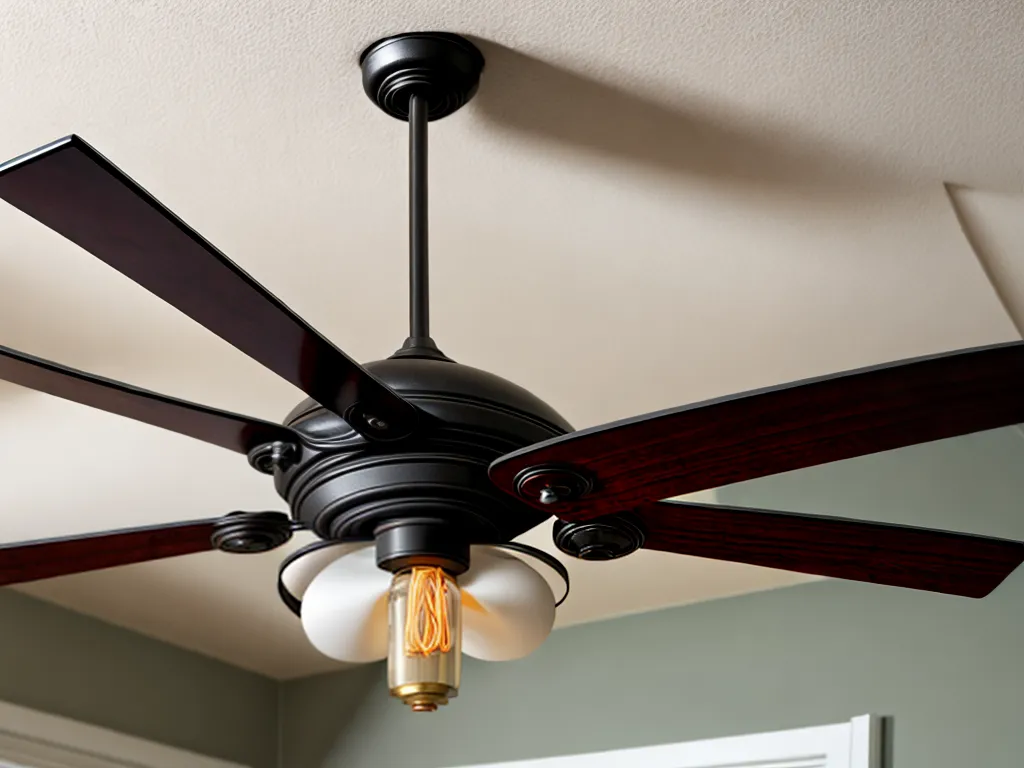
How to Wire a Ceiling Fan Using Old Knob and Tube Wiring
Safety Considerations When Working with Knob and Tube Wiring
I know that working with old electrical systems like knob and tube wiring can seem daunting, but with proper precautions it can be done safely. The most important thing is to make sure the wiring is in good condition with no damaged or frayed insulation before doing any work. I also need to be careful not to overload the circuit or create safety hazards like exposed wires.
Here are a few key safety tips I keep in mind:
- Always turn off power at the main breaker before doing any electrical work
- Test wires with a voltmeter to confirm power is off
- Wear insulated gloves and eye protection
- Inspect wiring for damage, replacing any old cloth-covered wire
- Use extreme caution when working in close proximity to live knob and tube wiring
Following basic electrical safety protocols and working carefully around the old wiring will help ensure I can update my wiring without incident. I may also want to consider upgrading from knob and tube in the long run, but I can safely install a ceiling fan in the meantime by taking the proper precautions.
Planning the Ceiling Fan Installation
Before I start the actual ceiling fan installation, there are a few important steps I need to take to plan out the project:
- Choose the right location - I'll pick a spot in the center of the room with at least 7 feet of clearance between the blades and the floor.
- Check for adequate support - Using an electronic stud finder, I'll locate ceiling joists or stability bars and make sure there is proper structural support for the ceiling fan.
- Determine wiring plan - I need to figure out the wiring plan up to the point of connection with the knob and tube, making sure I have proper modern wiring from the switch up to that junction.
- Gather supplies - I'll need basic electrical supplies like wire strippers, connectors, electrical tape, a ladder, as well as the mounting bracket, ceiling fan, and light bulbs.
- Turn off main power - This is the most important prep step! I will go to my electrical panel and turn off the main breaker so there is no live power during the installation.
With the proper planning and safety gear, I'll be ready to move on to the wiring steps. Safety first though - no shortcuts when dealing with electrical work!
Installing New Wiring to Junction Point
Before making connections with the old knob and tube wiring, I first need to install new wiring from the switch up to the ceiling fan junction box:
- Run 14/2 cable from the switch to the ceiling junction box location.
- Secure the new wiring using appropriate cable clamps and fasteners per local building codes.
- Make sure to leave 8-10 inches of excess wiring at the ceiling box.
- Attach the new ceiling box, taking care not to damage any old wiring inside the ceiling.
- Feed the new wiring through the ceiling box, leaving at least 6 inches of wire to make connections.
- Verify the new wires are firmly secured with no loose connections.
Once the new wiring is cleanly installed from the switch to the ceiling, I can move on to making the connections between old and new. The key is working slowly and safely around the old knob and tube wiring.
Making Connections with the Knob and Tube Wiring
Here are the step-by-step instructions for safely connecting the new wiring to the old knob and tube wires:
- Identify the live wire coming from the knob and tube - it will be wrapped around a ceramic knob.
- Connect the live knob and tube wire to the black (hot) wire from the new Romex cable using a wire nut.
- Identify the neutral knob and tube wire - it will be coming from a tube.
- Connect the white (neutral) Romex wire to the neutral knob and tube using a wire nut.
- Connect the ground wire coming from the new Romex cable to the grounding screw or wire inside the ceiling box.
- Make sure all connections are tight and insulated with electrical tape.
- Tuck all wires neatly into the ceiling box so the fan bracket can mount flush.
Double checking the connections are secure, properly insulated, and tucked out of the way will ensure everything is ready for the ceiling fan mounting bracket. I can now proceed with the rest of the ceiling fan installation knowing the wiring connections were made safely.
Installing and Mounting the Ceiling Fan
With the wiring complete, I can now install the ceiling fan itself:
- Attach the mounting bracket securely to the ceiling box per the manufacturer instructions.
- Lift the motor assembly and attach it to the mounting bracket using the downrod and built-in hangar ball.
- Make the wiring connections - connector wires from fan to the supply wires from the ceiling using provided wire nuts.
- Install the fan blades according to the specific design for your fan.
- Install light kit and any glass shades or bulbs.
- Secure the canopy at the top of the motor assembly.
- Once assembled, test the ceiling fan by restoring power - make sure fan and light are functioning properly.
Installing a ceiling overhead is simplified when the wiring is prepped correctly. By taking care when dealing with old knob and tube and using safe electrical practices, I can successfully update my home with a new ceiling fan. Just remember to always put safety first by turning off power at the breaker when working.